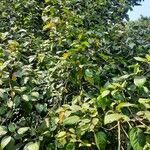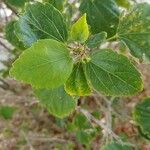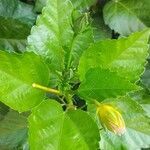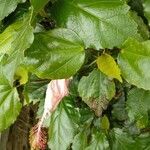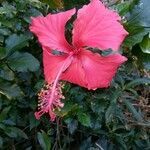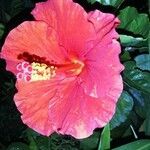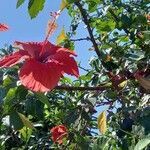| Therapeutic use
|
Central nervous system depressants (aerial part), Hypotension (aerial part), Parasympatholytics (aerial part), Abortifacient agents (bark), Antiviral agents (bark), Constipation (bark), Diarrhea (bark), Fever (bark), Menstruation-inducing agents (bark), Pain (bark), Hypomenorrhea (flower), Abdominal pain (flower), Abortifacient agents (flower), Hair loss (flower), Amenorrhea (flower), Analgesics (flower), Anemia (flower), Anticonvulsants (flower), Antiemetics (flower), Antihypertensive agents (flower), Anti-inflammatory agents (flower), Antimutagenic agents (flower), Antioxidants (flower), Antipruritics (flower), Antipyretics (flower), Antirheumatic agents (flower), Aphrodisiacs (flower), Asthma (flower), Astringents (flower), Blood glucose regulation (flower), Brain diseases (flower), Bronchial diseases (flower), Bronchitis (flower), Burns (flower), Cardiomyopathies (flower), Cardiotonic agents (flower), Common cold (flower), Constipation (flower), Contraceptive agents (flower), Cough (flower), Cystitis (flower), Dandruff (flower), Demulcents (flower), Diabetes mellitus (flower), Diuretics (flower), Dysentery (flower), Eczema (flower), Edema (flower), Disorder of ejaculation (flower), Emollients (flower), Epilepsy (flower), Erectile dysfunction (flower), Fertility agents (flower), Fever (flower), Furunculosis (flower), Gastritis (flower), Gastrointestinal hemorrhage (flower), Gonorrhea (flower), Headache (flower), Heart diseases (flower), Hematologic diseases (flower), Hemoptysis (flower), Hemorrhage (flower), Hemorrhoids (flower), Hemostasis (flower), Hypertension (flower), Hypnotics and sedatives (flower), Hypoglycemic agents (flower), Hypolipidemic agents (flower), Immunomodulation (flower), Inflammation (flower), Insecticides (flower), Counterirritant (flower), Jaundice (flower), Kidney diseases (flower), Leprosy (flower), Leukorrhea (flower), Lipid peroxidation (flower), Menorrhagia (flower), Menstruation disturbances (flower), Menstruation-inducing agents (flower), Mental disorders (flower), Metrorrhagia (flower), Mumps (flower), Nervous system diseases (flower), Nootropic agents (flower), Pain (flower), Parasympatholytics (flower), Premature ejaculation (flower), Scabies (flower), Scurvy (flower), Sexually transmitted diseases (flower), Skin diseases (flower), Smallpox (flower), Sterilization, reproductive (flower), Syphilis (flower), Tonsillitis (flower), Ulcer (flower), Urinary tract infections (flower), Urination disorders (flower), Urogenital system (flower), Urologic diseases (flower), Whooping cough (flower), Wound healing (flower), Wounds and injuries (flower), Genital infection (flower), Urethral discharge (flower), Sexual debility (flower), Cooling effect on body (flower), Hair loss (fruit), Abdominal pain (leaf), Abortifacient agents (leaf), Abscess (leaf), Acne vulgaris (leaf), Hair loss (leaf), Analgesics (leaf), Anti-bacterial agents (leaf), Anti-inflammatory agents (leaf), Antinematodal agents (leaf), Antipruritics (leaf), Antipyretics (leaf), Aphrodisiacs (leaf), Asthma (leaf), Burns (leaf), Constipation (leaf), Cough (leaf), Dandruff (leaf), Diabetes mellitus (leaf), Diuretics (leaf), Dysentery (leaf), Eczema (leaf), Disorder of ejaculation (leaf), Emollients (leaf), Fatigue (leaf), Fever (leaf), Furunculosis (leaf), Gonorrhea (leaf), Hair diseases (leaf), Headache (leaf), Hematologic diseases (leaf), Hemorrhoids (leaf), Hypertension (leaf), Hypotension (leaf), Inflammation (leaf), Insecticides (leaf), Kidney diseases (leaf), Laxatives (leaf), Leprosy (leaf), Liver diseases (leaf), Menstruation disturbances (leaf), Pain (leaf), Scabies (leaf), Sexually transmitted diseases (leaf), Skin diseases (leaf), Smallpox (leaf), Syphilis (leaf), Ulcer (leaf), Urinary tract infections (leaf), Urologic diseases (leaf), Urticaria (leaf), Wounds and injuries (leaf), Cooling effect on body (leaf), Abortifacient agents (root), Amnesia (root), Anti-anxiety agents (root), Antidepressive agents (root), Antipruritics (root), Antirheumatic agents (root), Asthma (root), Constipation (root), Contraceptive agents (root), Cough (root), Diuretics (root), Disorder of ejaculation (root), Fever (root), Gonorrhea (root), Hyperlipidemias (root), Kidney diseases (root), Lung diseases (root), Menorrhagia (root), Neurotic disorders (root), Nootropic agents (root), Pain (root), Sexually transmitted diseases (root), Skin diseases (root), Stomach diseases (root), Ulcer (root), Urologic diseases (root), Vomiting (root), Anti-dyskinesia agents (root), Gonorrhea (seed), Urinary bladder diseases (seed), Jaundice (shoot), Antineoplastic agents (stem), Contraceptive agents (stem), Cytostatic agents (stem), Disorder of ejaculation (stem), Estrous cycle (stem), Eye pain (stem), Infertility, male (stem), Vaginal discharge (stem), Abortifacient (unspecified), Amenorrhea (unspecified), Anodyne (unspecified), Antidiarrheic (unspecified), Antidote (unspecified), Aperient (unspecified), Aphrodisiac (unspecified), Asthma (unspecified), Astringent (unspecified), Boil (unspecified), Bronchitis (unspecified), Cancer (unspecified), Carbuncle (unspecified), Catarrh (unspecified), Cold (unspecified), Tuberculosis (unspecified), Cough (unspecified), Emmenagogue (unspecified), Emollient (unspecified), Expectorant (unspecified), Eye (unspecified), Fever (unspecified), Flu (unspecified), Gonorrhea (unspecified), Hairblack (unspecified), Hematemesis (unspecified), Hernia (unspecified), Labor (unspecified), Menorrhagia (unspecified), Metroxenia (unspecified), Ophthalmia (unspecified), Parturition (unspecified), Pectoral (unspecified), Poultice (unspecified), Puerperium (unspecified), Purgative (unspecified), Refrigerant (unspecified), Stomach (unspecified), Sudorific (unspecified), Swelling (unspecified), Tumor (unspecified), Urogenital (unspecified), Venereal (unspecified), Demulcent (unspecified), Dentifrice (unspecified), Adenopathy (unspecified), Dysmenorrhea (unspecified), Hemostat (unspecified), Parotitis (unspecified), Sore (unspecified), Laxative (unspecified), Hair loss (unspecified), Analgesics (unspecified), Antifungal agents (unspecified), Antineoplastic agents (unspecified), Anti-obesity agents (unspecified), Antipyretics (unspecified), Aphrodisiacs (unspecified), Cardiovascular system (unspecified), Central nervous system diseases (unspecified), Common cold (unspecified), Contraceptive agents (unspecified), Diabetes mellitus (unspecified), Emollients (unspecified), Estrogen receptor modulators (unspecified), Fertility agents (unspecified), Hair diseases (unspecified), Hair dyes (unspecified), Hemorrhoids (unspecified), Hypertension (unspecified), Hypotension (unspecified), Hypothermia (unspecified), Laxatives (unspecified), Leukorrhea (unspecified), Postnatal care (unspecified), Pregnancy complications (unspecified), Tonsillitis (unspecified), Urination disorders (unspecified), Hypertension (whole plant), Laxatives (whole plant), Menorrhagia (whole plant)
|
